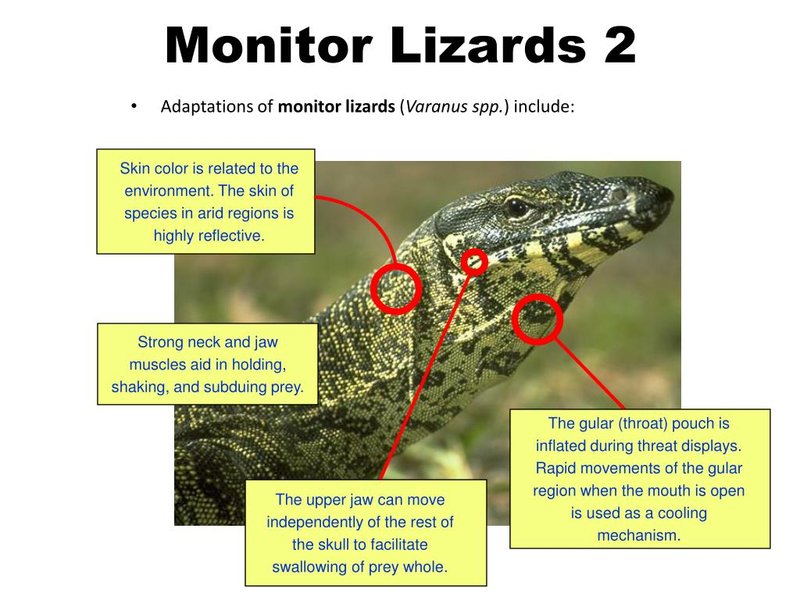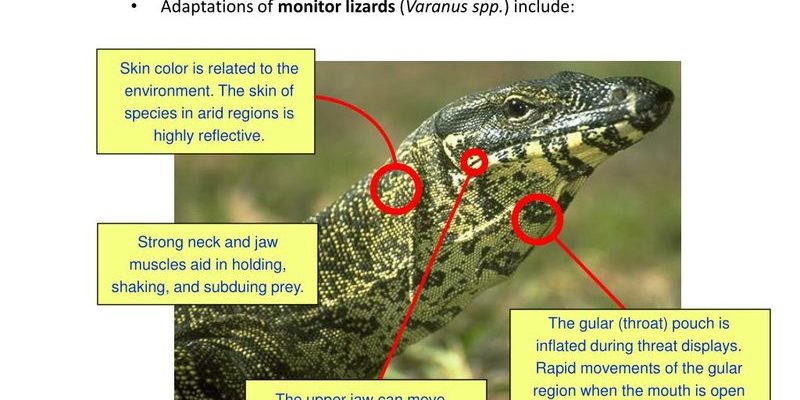
You may be wondering what exactly makes monitor lizards so unique. Well, it’s all about their incredible physical traits and behaviors. From their sharp senses to their hunting techniques, each adaptation serves a critical role in their survival. So, grab a cup of coffee and let’s dive into what makes these fascinating reptiles the champions of their habitats.
Sharp Senses: The Monitor Lizard’s Superpower
One of the most striking features of monitor lizards is their exceptional sense of smell. Unlike many other reptiles, monitor lizards have a keen sense of olfaction that helps them detect food, predators, and mates from considerable distances. Their forked tongues, similar to those of snakes, play a crucial part in this process. When they flick their tongues in and out, they pick up scent particles from the environment and transfer them to the Jacobson’s organ located in the roof of their mouth.
Imagine walking into a bakery and instantly smelling fresh bread from down the street—that’s how monitor lizards perceive their surroundings. This heightened sense of smell helps them find prey, such as small mammals, birds, and even carrion. It also allows them to stay alert to dangers lurking nearby.
But that’s not all! Monitor lizards also have excellent vision. Many species can see in color and possess great visual acuity to track movement. This combination of sharp senses enables them to navigate their environments skillfully and act quickly, whether they’re hunting or evading threats.
Powerful Bodies: Built for Survival
When you look at a monitor lizard, their robust bodies might catch your attention first. These lizards can vary greatly in size, with some growing up to 10 feet long! Their muscular build is not just for show; it’s essential for their survival. These lizards have strong limbs that allow them to run quickly or climb trees to escape from predators or reach prey.
But their strength serves another purpose, too. Monitor lizards are known for their strong jaws and sharp teeth. They can bite with a force that makes it easier to grasp and tear apart their prey. You might say their muscles and teeth are like the ultimate survival tools, allowing them to eat a diverse diet that includes not just insects and rodents, but sometimes even larger animals.
Another fascinating adaptation is their long, forked tongues that help them explore their environment. Like a detective using a magnifying glass, these tongues aid in gathering information. They help monitor lizards “taste” the air, which is crucial for locating food and navigating their territory.
Adaptable Diet: Omnivores at Heart
One of the secrets to monitor lizards’ success is their flexible diet. While many reptiles are strict carnivores or herbivores, monitor lizards can thrive on a wide range of foods. This adaptability is a remarkable survival strategy. They feast on insects, rodents, birds, eggs, and even carrion, which means they can find food in various habitats.
This diverse diet allows them to take advantage of whatever is available, whether they’re in a lush forest or a dry desert. For example, in times of scarcity, they might switch from hunting to scavenging. It’s like being a buffet lover in a world full of food options—all you have to do is adapt to your surroundings and enjoy the feast!
Interestingly, monitor lizards are also equipped with a set of sharp, elongated teeth that are perfect for grasping and tearing apart prey. Their jaw muscles are powerful, making them excellent hunters. So, when you think about how these lizards find their meals, it’s clear that their dietary flexibility is key to their survival.
Behavioral Adaptations: Smart Survival Strategies
Beyond their physical traits, monitor lizards exhibit a range of behavioral adaptations that enhance their chances of survival. They are often solitary animals, roaming vast territories to find food. This independence allows them to avoid competition and predators.
Some species of monitor lizards, like the infamous Komodo dragon, have developed unique hunting strategies. They use stealth and patience to stalk their prey before launching a surprise attack. Picture a lion on the savannah—monitor lizards employ similar tactics to ensure they catch their meal when the moment is just right.
Moreover, monitor lizards are known for their ability to regulate their body temperature by moving between sunlit areas and shaded spots. They bask in the sun to absorb heat when they’re cold and retreat to cooler areas to avoid overheating. This thermoregulation is essential, particularly in hot climates, ensuring they remain active and healthy throughout the day.
Camouflage: Blending In with the Environment
Another critical adaptation for monitor lizards is their ability to camouflage. Many species have skin that mimics their surroundings, making it harder for both predators and prey to spot them. For instance, a monitor lizard in a sandy desert might have a lighter coloration, while one in the jungle may be darker and more patterned. This natural disguise is like wearing a cloak of invisibility, allowing them to sneak around undetected.
This camouflage is particularly important for young hatchlings that are more vulnerable to predators. By blending in, they can hide from larger animals and increase their chances of survival during those critical early months of life.
In addition to using camouflage, monitor lizards can also adopt different postures or positions to further conceal themselves. They might remain motionless or latently hide among leaves and branches, reducing the chances of being spotted.
Reproductive Strategies: Ensuring Future Generations
Monitor lizards also have fascinating reproductive adaptations that contribute to their survival. Most species are oviparous, meaning they lay eggs. The female typically lays a clutch of eggs in a secure location, such as buried in sand or dirt, where they are more protected from predators.
By laying eggs rather than giving birth to live young, monitor lizards can invest in more offspring, ensuring that at least some will survive to maturity. It’s like planting seeds in a garden—while not all might grow, some will flourish and contribute to the next generation.
Interestingly, some species also exhibit parental care, though it’s less common. For instance, the female may stay near the nest to deter potential threats. This investment in their young helps improve their chances of survival until they can fend for themselves.
The Resilience of Monitor Lizards
In conclusion, monitor lizards are truly remarkable survivors thanks to their unique adaptations. From their sharp senses and powerful bodies to their flexible diets and effective hunting strategies, they have evolved to thrive in various habitats. Their ability to camouflage and their reproductive strategies further enhance their chances of survival in the wild.
It’s fascinating to think about how these adaptations have shaped their existence for millions of years. Monitor lizards remind us of the resilience of nature and the clever ways that life on Earth adapts to challenges. So the next time you spot one of these incredible lizards, take a moment to appreciate the survival story written in their scales. Whether it’s a small one basking in the sun or a massive Komodo dragon commanding its territory, each monitor lizard is a testament to adaptability and survival in a complex world.

